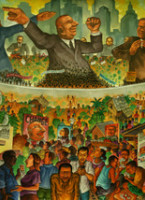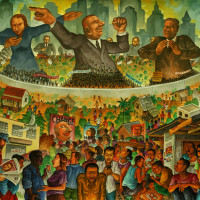The Third Great Depression and rise of the far-right Experiences from Turkey
Temas
In Turkey the Islamist right garners support in rural areas by promoting social welfare and subsidy programmes. The left needs to put farmers and workers at the centre of class-based struggle.

Wikicommons/ Eser Karadağ. Some rights reserved.
The contemporary far-right comprises three main strands. The first is the authoritarian right, aiming to weaken progressive forces and civil rights and liberties without trying to destroy the institutions of electoral democracy altogether. The second comprises the proto-fascist parties that (implicitly or explicitly) aim to destroy electoral democracy and monopolize political power indefinitely. The lack of a strong paramilitary apparatus is one of the main differences distinguishing these movements from the classical fascism (of Italy and Germany) of the inter-war period. Front National (FN) in France and Alternative for Germany (AfD) in Germany are examples of this phenomenon.
This is one of the closing articles in the series on ‘confronting authoritarian populism and the rural world’, linked to the Emancipatory Rural Politics Initiative (ERPI). The full article can be read here.


